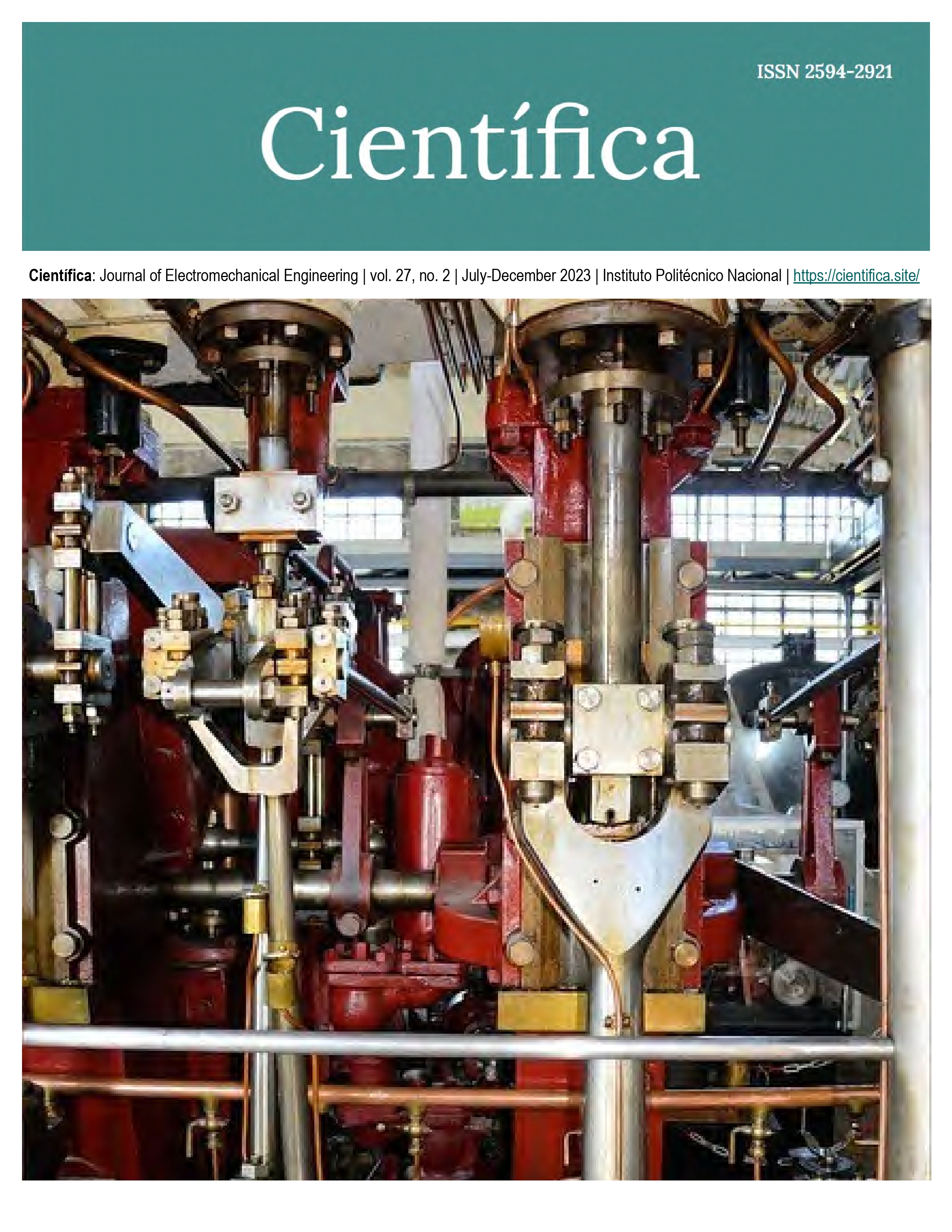Analysis of Power System for Flight Computer of a CubeSat Nano Satellite
DOI:
https://doi.org/10.46842/ipn.cien.v27n2a03Keywords:
nanosatellite, telecommunications, power subsystem, COTS, CubeSatAbstract
CubeSats devices were conceived with the goal of providing students with experiences in small-scale aerospace design, construction, and testing. Because of this, CubeSats have competitive advantages compared to other satellites; emphasizing the cost, flexibility, and use of commercial off-the-shelf (COTS) products. Likewise, the power board of these devices plays a crucial role in the power system, since it is responsible for distributing electrical power to each of the satellite components, safely and efficiently. However, the use of electronics not designed for space missions often compromises the performance and reliability of our device. Therefore, the analysis of the PCB board is of the utmost importance to guarantee the correct operation of the CubeSat, safeguarding its integrity and the dependent subsystems. This document proposes the analysis of a power board for the flight computer, using redundant, control and fault recording systems, as well as the use of COTS components for its implementation, adaptation and scope in any industrial, educational and commercial environment; in order to improve the performance of the device.
References
C. Robertson, Printed Circuit Board Designer's Reference Basics, New Jersey, United States of America: Pearson Education, 2003.
J. Straub et al., “CubeSats and Small Satellites”, International Journal of Aerospace Engineering, vol. 2019, doi: https://doi.org/10.1155/2019/9451673
J. Straub et al., “OpenOrbiter: A Low-Cost, Educational Prototype CubeSat Mission Architecture”, Machines, vol. 1, no. 1, 2013, pp. 132, doi: https://doi.org/10.3390/mach1010001
G. Morettini, A. Staffa, E. Mancini, M. Dionigi, F. Cianetti, C. Braccesi, “Simplified Fe modeling of the PyCubed PCB complete with components for CubeSat missions”, Journal of Space Safety Engineering, vol. 9, no. 3, 2022, pp. 328-340, doi: https://doi.org/10.1016/j.jsse.2022.06.004.
PyCubed, “What is a PyCubed”, https://pycubed.org/.
BsC. Güvenç, C. C., BsC. Topcu B., and Ph.D. Tola C., "Mechanical Design And Finite Element Analysis Of A 3 Unit Cubesat Structure", International Scientific Journal, vol. 12, no. 5, 2018, pp. 193-196, available: https://stumejournals.com/journals/mtm/2018/5/193.
Joshua M. Pearce, “Economic savings for scientific free and open source technology: A review”, HardwareX, vol. 8, 2020, doi: https://doi.org/10.1016/j.ohx.2020.e00139.
S. Antunes, Bulding a Space-Ready General Base Picosatellite for Any Mission, Gravenstein Highway North, United States of America: O'Reilly, 2012.
Small Spacecraft Technology State of the Art, NASA/TP–2015–216648/REV1, National Aeronautics and Space Administration, USA, Dec. 2015, available: https://www.nasa.gov/sites/default/files/atoms/files/small_spacecraft_technology_state_of_the_art_2015_tagged.pdf
Kenjiro S. Lay, Lingqi Li, Masataka Okutsu, High altitude balloon testing of Arduino and environmental sensors for CubeSat prototype, HardwareX, vol. 12, 2022, doi: https://doi.org/10.1016/j.ohx.2022.e00329.
A. Jara, P. Lepcha, S. Kim, H. Masui, T. Yamauchi, G. Maeda, M. Cho, On-orbit electrical power system dataset of 1U CubeSat constellation, Data in Brief, vol. 45, 2022, doi: https://doi.org/10.1016/j.dib.2022.108697.
Aung, H., Soon, J. J., Goh, S. T., Lew, J. M., & Low, K.-S. (2020). Battery Management System With State-of-Charge and Opportunistic State-of-Health for a Miniaturized Satellite. IEEE Transactions on Aerospace and Electronic Systems, vol. 56, no. 4, doi: https://doi.org/10.1109/TAES.2019.2958161
Ian F. Akyildiz, Josep M. Jornet, Shuai Nie, A new CubeSat design with reconfigurable multi-band radios for dynamic spectrum satellite communication networks, Ad Hoc Networks, Volume 86, 2019, pp. 166-178, doi: https://doi.org/10.1016/j.adhoc.2018.12.004.
Gonzalez-llorente, J. (2016). Análisis de la Capacidad de Almacenamiento de las Baterías para un Satélite CubeSat 3U.
Semiconductor Components Industries, “Using MOSFETs in Load Switch Applications . AND9093”,LLC,2014. AND9093/D, available: https://www.onsemi.cn/PowerSolutions/document/AND9093-D.PDF.
Microchip Technology Inc., 2020, 16-Bit General Purpose Microcontrollers with 256-Kbyte Flash and 16-Kbyte RAM in Low Pin Count Packages, available: https://ww1.microchip.com/downloads/en/DeviceDoc/ESP32-FamilyData-Sheet-DS30010118E.pdf
Alfredo Olea, Georgina Ponce, P.J Sebastian, Electron transfer via organic dyes for solar conversion, Solar Energy Materials and Solar Cells, Volume 59, Issues 1–2, 1999, pp. 137-143, doi: https://doi.org/10.1016/S0927-0248(99)00038-0.
Nelly Maria Rosas-Laverde, Alina Pruna, Jesus Cembrero, Javier Orozco-Messana, Francisco Javier Manjón, Performance of graphene oxide-modified electrodeposited ZnO/Cu2O heterojunction solar cells, Boletín de la Sociedad Española de Cerámica y Vidrio, Volume 58, Issue 6, 2019, pp. 263-273, doi: https://doi.org/10.1016/j.bsecv.2019.06.002
Lía Hidalgo de los Santos, “Analysis of the failure modes of the energy management system of a Cubesat”, INTEC, available: https://repositoriobiblioteca.intec.edu.do/handle/123456789/5683?show=full
Aloysius F. Hepp, Prashant N. Kumta, Oleg I. Velikokhatnyi, Ryne P. Raffaelle, “Silicon Anode Systems for Lithium-Ion Batteries”, Elsevier, 2022, pp. 457-508, doi: https://doi.org/10.1016/B978-0-12-819660-1.00011-6.
DAN HOLD, "BATTERY CHARGING FUNDAMENTALS, Battery Basics, Discharge Rate ," Microchip University,. 18 de Jul. de 2022, available: https://mu.microchip.com/battery-charging-fundamentals/617408
DAN HOLD, "BATTERY CHARGING FUNDAMENTALS, Battery Chemistries, Li-Ion," Microchip University, 18 de Jul. de 2022, available: https://mu.microchip.com/battery-charging-fundamentals/617418
DAN HOLD, "BATTERY CHARGING FUNDAMENTALS, Charging Waveforms,Li-Ion ," Microchip University,. 18 de Jul. de 2022, available: https://mu.microchip.com/battery-charging-fundamentals/617443
J. Bouwmeester, A. Menicucci, E.K.A. Gill, “Improving CubeSat reliability: Subsystem redundancy or improved testing?”, Reliability Engineering & System Safety, Volume 220, 2022, doi: https://doi.org/10.1016/j.ress.2021.108288
Downloads
Published
Issue
Section
License
Copyright (c) 2023 Instituto Politecnico Nacional

This work is licensed under a Creative Commons Attribution-NonCommercial-ShareAlike 4.0 International License.

